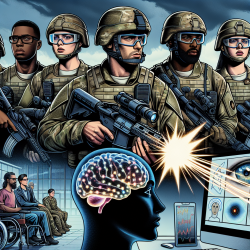Introduction to Sociotechnical Systems in Speech-Language Pathology
In the field of speech-language pathology, the integration of technology and human interaction is crucial for effective therapy delivery. The research article titled "Modelling and simulation of complex sociotechnical systems: envisioning and analysing work environments" provides insights into how modeling and simulation can enhance our understanding and management of complex systems. This understanding is particularly relevant for online therapy services like those provided by TinyEYE, where technology and human factors intersect to deliver quality care to children.
Understanding Sociotechnical Systems
Sociotechnical systems theory emphasizes the interplay between social and technical factors in complex systems. In speech-language pathology, this means considering how therapists, technology, and organizational structures interact to impact therapy outcomes. The research highlights that traditional experimental approaches may not fully capture these interactions, suggesting that computer-based models and simulations offer a more comprehensive method for analysis.
Benefits of Modeling and Simulation
Modeling and simulation provide several advantages for understanding and improving sociotechnical systems in speech-language pathology:
- Enhanced Comprehension: Models create a shared mental model among stakeholders, improving understanding of system dynamics and potential impacts of changes.
- Risk Reduction: Simulations help identify potential negative interactions and unintended consequences, reducing risks in therapy delivery.
- Design and Evaluation: These tools allow for the exploration of different therapy delivery models and the evaluation of their effectiveness in a virtual environment.
Implementing Sociotechnical Insights in Practice
Practitioners can leverage insights from sociotechnical systems modeling to enhance their practice. For instance, understanding the interactions between therapists and technology can lead to more effective training programs and better integration of new tools into therapy sessions. Additionally, simulations can be used to test new therapy approaches in a risk-free environment before implementation.
Encouraging Further Research
While the current research provides a solid foundation, there is a need for further exploration into how these models can be tailored specifically for speech-language pathology. Practitioners are encouraged to engage with this research and consider how they can contribute to the development of more refined models that address the unique challenges of their field.
To read the original research paper, please follow this link: Modelling and simulation of complex sociotechnical systems: envisioning and analysing work environments.










